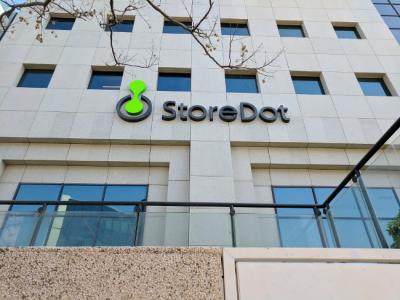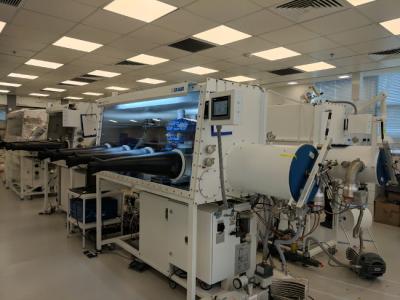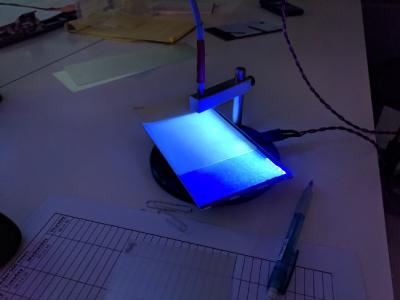StoreDot was established in 2011, to commercialize bio-organic quantum dots based on a process developed at Tel Aviv University. The company's first product was to be a memory device - hence the name StoreDot. In 2013 I visited the company in its Ramat Gan office to report on its quantum dot advances for display applications.

Since 2013, a lot has happened at StoreDot. The company changed its direction and is now focused on a new organic-material synthesis method that enabled it to develop nanomaterials that exhibit quantum dot like performance but that are not actually quantum dots. The company is now targeting two applications - fast charging batteries and displays. StoreDot has moved to large offices in Herzelia, has now over 60 employees and raised over $60 million dollars (led by Samsung Ventures). The one thing that did not change is the name - even though the company is neither into memory devices nor quantum dots anymore...
We were happy to be invited to StoreDot's new offices and labs - it is very exciting to see how the company progressed in only 3 years. Here's a summary of our visit to StoreDot to detail the company's new technology and products.

While OLED-Info is not focused on batteries, it is an interesting topic nevertheless (especially as our sister site graphene-info does indeed cover graphene-enhanced batteries quite extensively). StoreDot's technology enables a mobile-phone battery to charge in less than one minute - which, according to StoreDot, if people change their mindset, can lead to an "indefinite battery" as it can be charged so quickly.
The fast charge does come with a cost - the battery's capacity is lower by around 10% compared to a regular Li-Ion battery, and its charge-cycle limitation is lower (around 300 cycles, compared to around 500 in a regular battery).
StoreDot is now starting to commercialize those batteries and is looking at several possible business models - but either way it hopes to have products on the market in 2017. Looking forward, it aims to further enhance the performance of these batteries - and also enter the electric-vehicle battery market.
StoreDot's display unit is of more interest to us, though. The company's all-organic materials exhibit very efficient photo-luminescence - on par with Cadmium-based quantum dots. Following years of research, Storedot managed to develop films (which they brand as MolecuLED) based on these materials that exhibit comparable lifetime to QD films. StoreDot is now ready to commercialize these films and aims to have these ready to be used in LED LCDs by the end of 2017. You can click here to see the specification of StoreDot's materials.

StoreDot's materials are not sensitive to moisture or oxygen and so do not require protection - and they contain only organic materials. This enables the company to produce them very cost effectively and StoreDot believes these films will be highly attractive to display makers. In the first stage StoreDot will offer these films to display makers, but in the future it will also be possible to coat StoreDot's materials on one of the existing LCD films (such as the polarizer film or the light guide) to make the whole solution even more efficient and cost-effective.
Finally, StoreDot materials also exhibit electro-luminescence - which means that they could be used to replace OLED emitters - in a similar fashion, again, to QD materials. Their inherent efficiency, long lifetime, low cost and oxygen and moisture exposure tolerance means that these could be very attractive in the future. There is still a long R&D effort before these materials could be commercialized though, but we will keep our eyes open on that company and its technology. StoreDot's organic materials seem to be an exciting QD competitor and we are sure that these materials will find their way into more applications in the future.

